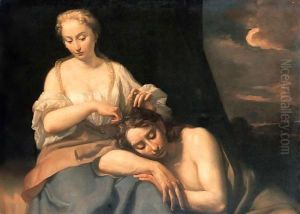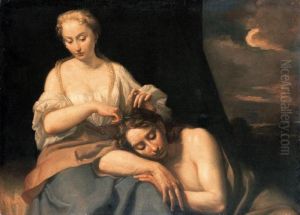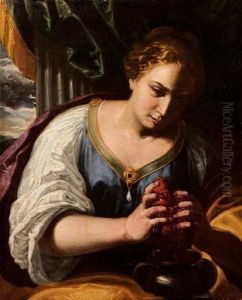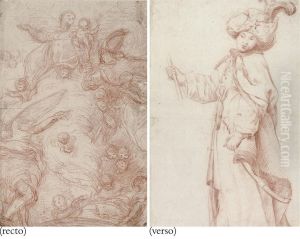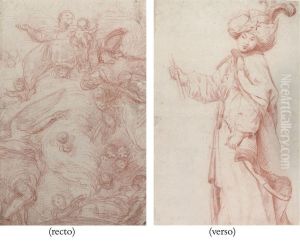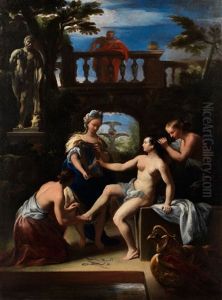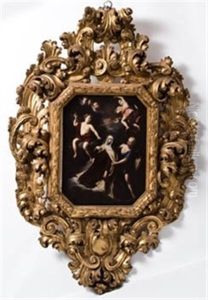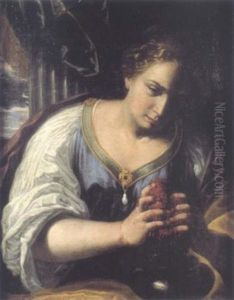Antonio Gherardi Paintings
Antonio Gherardi, also known as Antonio Tatoti, was an Italian painter, architect, and stuccoist of the Baroque period. Born in Rieti in the Papal States on September 20, 1638, he moved to Rome at a young age, where he would spend the majority of his life and career. Gherardi began his artistic training under the tutelage of Pietro da Cortona, one of the leading painters of the Roman Baroque. Although he is less known than his contemporaries such as Bernini and Borromini, Gherardi made significant contributions to the Italian art scene of his time.
In Rome, Gherardi quickly established himself as a versatile artist, skilled in painting, stucco work, and architecture. His work was marked by a combination of dynamism, theatricality, and a command of the illusionistic techniques that were popular among Baroque artists. Some of his most notable works include the frescoes in the church of Santa Cecilia in Trastevere, the Chapel of the Blessed Sacrament in San Francesco a Ripa, and the ceiling of the Biblioteca Vallicelliana at the Oratory of San Filippo Neri. Gherardi’s artistry was not limited to ecclesiastical commissions; he also worked on various palaces and villas, contributing to the decorative schemes that were in vogue among the Roman elite.
Gherardi's architectural contributions are less documented, but he is known to have designed the church of San Silvestro in Capite in Rome. His design reflected the Baroque aesthetics of grandeur and movement, although his architectural works were often overshadowed by his more prolific contemporaries. Nevertheless, Gherardi’s multifaceted skills allowed him to integrate painting, stucco, and architectural elements, creating harmonious and immersive environments that were characteristic of the Baroque period.
Antonio Gherardi’s style evolved over time, showing influences from Cortona as well as the dramatic chiaroscuro of Caravaggio and the Bolognese classicism of the Carracci. His work, although not as widely recognized today, was appreciated in his time for its inventiveness and craftsmanship. Gherardi died in Rome on May 10, 1702, leaving behind a body of work that, while not extensive, contributed to the rich tapestry of Baroque art in Italy. His legacy continues to be studied and admired by art historians and enthusiasts, and his works can still be seen in various churches and collections in and around Rome.
